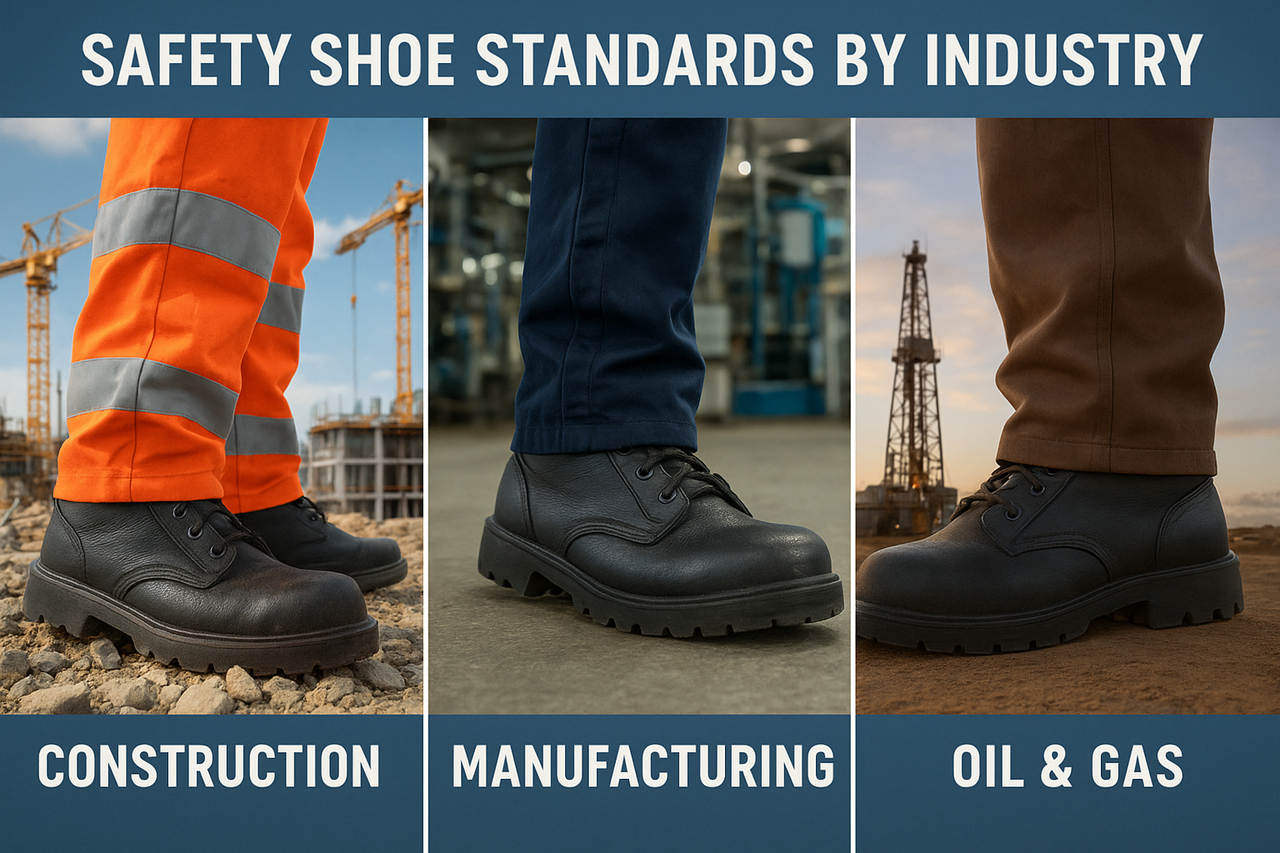Safety Shoe Standards by Industry: Construction, Manufacturing, Oil & Gas
Posted by Darman Distributors on Sep 2nd 2025
Protective footwear is more than an accessory—it’s a requirement in industries where workers face daily hazards. Each field has unique risks, and footwear must be built to address them. Safety shoes are made to meet certain standards to protect workers. They prevent feet from getting crushed, slipping, or being exposed to chemicals.
It's important to remember that compliance is required when picking out the best safety shoes for industrial use. Standards guide manufacturers and employers to provide footwear that meets the right level of protection. In this article, we’ll review how safety shoe standards apply across construction, manufacturing, and oil and gas.
Why Standards Matter in Safety Footwear?
Every job site presents a range of hazards. To reduce accidents, safety footwear must meet established regulations, and testing requirements. Standards confirm that a shoe can handle the pressures of real-world environments from electrical resistance to impact compression.
The most recognized benchmark in the United States is the ANSI footwear standards (American National Standards Institute). Over the years, OSHA and ASTM have worked alongside ANSI to create updated guidelines, but ANSI remains a familiar term in many industries. These standards assure that shoes protect your feet properly for the job.
Safety Shoe Standards in Construction
Construction sites are unpredictable environments. Workers face risks from falling tools, heavy materials, sharp objects, and uneven terrain. Because of this, construction footwear falls under rigorous safety footwear standards.
- Toe Protection: Steel or composite toe caps are non-negotiable to protect against falling objects.
- Puncture Resistance: Outsoles often include a puncture plate to defend against nails or rebar.
- Slip Resistance: Construction sites may have water, mud, or loose gravel so traction is a must.
Toe protection, slip resistance, and puncture-proof soles are usually found in the best safety shoes for industrial use in construction. Employers are required by OSHA to provide shoes that meet ANSI and ASTM standards. This is both the law, and good business practice.
Safety Shoe Standards in Manufacturing
Manufacturing plants vary widely, from food processing to heavy machinery assembly. Still, the risks stay same: machinery, sharp tools and electricity dangers. In these places, safety footwear standards are made to fit risks that are specific to the workplace.
- Electrical Hazard Protection: In places with high-voltage equipment, shoes that save people, from getting shocked are quite important.
- Static Dissipative Properties: In electronic manufacturing, static discharge can damage products. Footwear that has been tested to remove static protects workers, and products.
- Durability Under Heavy Use: Manufacturing demands footwear that withstands long hours of standing and exposure to oils or chemicals.
The best safety shoes for industrial use in manufacturing are usually light but strong, ensuring comfort while still meeting ANSI or ASTM standards for protection. Employers must ensure that safety footwear must meet all required regulations to prevent accidents that could slow down production lines.
Safety Shoe Standards in Oil & Gas
Oil and gas workers face some of the harshest conditions: slick surfaces, exposure to petroleum products, extreme weather, and heavy machinery. Footwear in this sector must exceed standard protection because of the heightened risk of fires and slips.
- Slip Resistance: High-quality traction is critical to prevent accidents on oily, or wet platforms.
- Heat and Chemical Resistance: Outsoles must withstand petroleum exposure without falling.
- Metatarsal Protection: Metatarsal guards on shoes protect more than just the toes which is very important in places where big tools and pipes are handled.
- Electrical Resistance: Shoes must also meet requirements to protect against electrical hazards.
Safety shoe standards for oil, and gas require footwear with multiple layers of protection. Following ANSI footwear standards is important because workers depend on them to keep them safe in harsh situations.
Key Elements All Safety Shoes Must Meet
Certain requirements are the same across businesses. To be considered compliant, safety footwear must meet criteria such as:
- Impact and Compression Resistance
- Slip Resistance
- Chemical or Heat Resistance (depending on the workplace)
- Electrical Protection
These shared expectations form the foundation of safety footwear standards, guiding both manufacturers and employers to provide consistent worker protection.
How Standards Support Workplace Efficiency?
Safety footwear helps with long-term productivity in addition to preventing injuries. Accidents reduces, when people wear shoes made for work. When workers have reliable footwear, they can move around with confidence which reducing stumbling, and tiredness.
By following ANSI footwear standards and industry-specific guidelines, businesses ensure compliance while building trust with their workforce. Investing in the right protective shoes is good for both the worker and the company because safe workers are more productive.
Why Choosing the Right Safety Shoes Matters?
Every industry faces unique hazards but the outcome of proper protection remains the same: reduced accidents and greater confidence on the job. Employers who spend money on shoes that meet safety shoe standards for construction, manufacturing, or oil and gas work maintain both compliance and productivity.
By prioritizing footwear that aligns with safety footwear standards, businesses protect their teams while supporting operational efficiency. Workers equipped with the best safety shoes for industrial use are better prepared for the challenges of their job, ensuring safety and performance go hand in hand.

